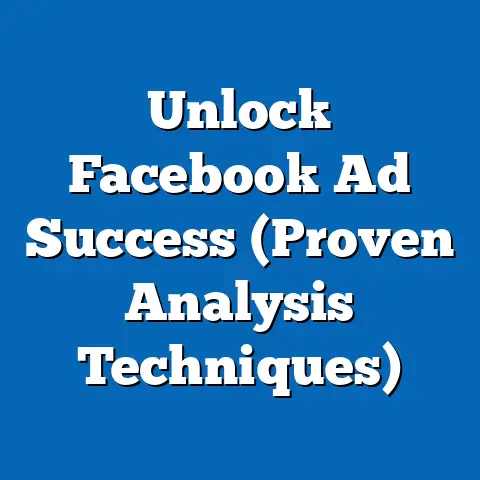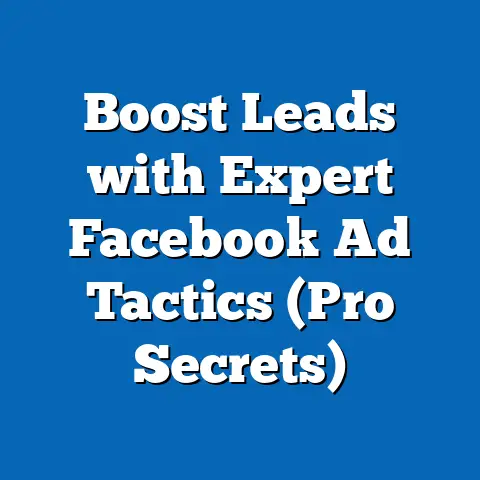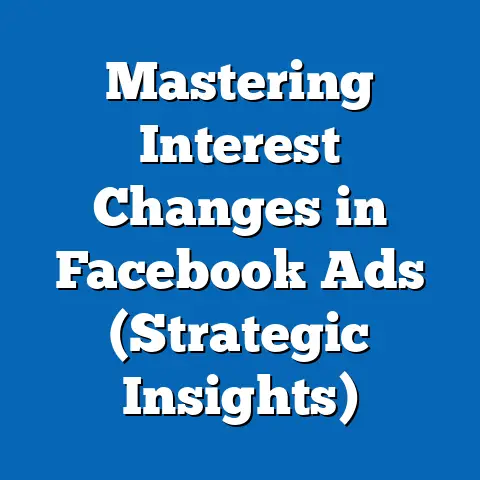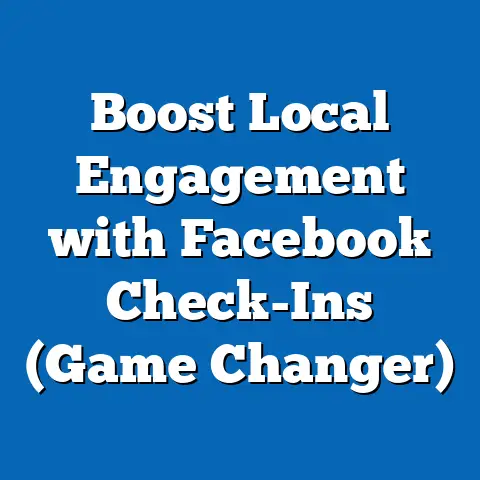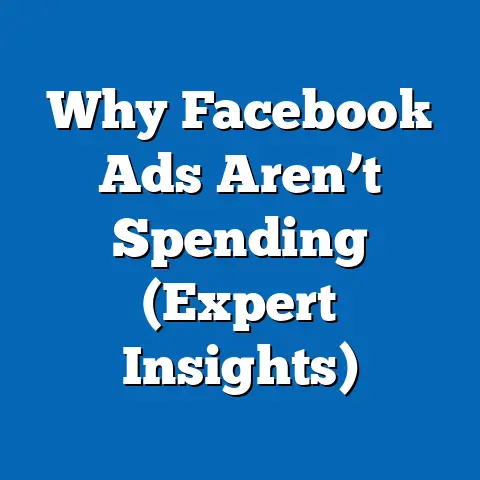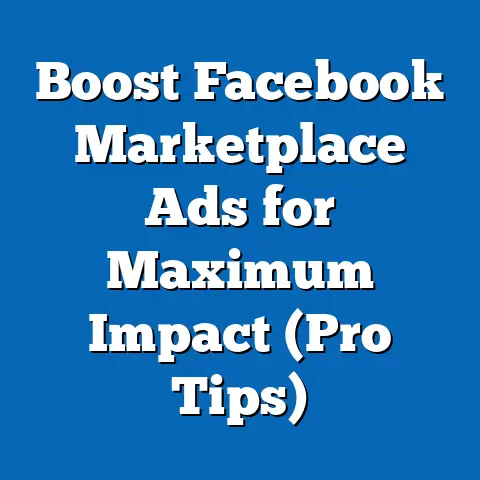Master Facebook’s Download Icon (Ultimate Guide)
Have you ever felt like your Facebook ads were shouting into the void? Spending money, seeing impressions, but getting little to no tangible return? I know that feeling. I remember working with a small business owner, Sarah, who was incredibly frustrated with her Facebook ad performance. She was running beautiful ads showcasing her handcrafted jewelry, but the sales just weren’t coming. After a deep dive into her campaigns, I noticed she wasn’t leveraging one of Facebook’s most underutilized features: the download icon.
Sarah’s target audience, busy professionals, were constantly on the go. They didn’t have time to browse her entire website. What they needed was a quick, digestible resource – a curated catalog of her best-selling pieces in a downloadable PDF. We created a stunning, mobile-friendly catalog and linked it to her Facebook ad using the download icon. The results were astounding. Within a week, her website traffic doubled, and sales increased by 30%. This seemingly simple change unlocked a treasure trove of insights and conversions, proving the transformative power of the download icon.
The download icon on Facebook isn’t just a button; it’s a gateway. It’s a direct line to providing value to your audience, offering them something tangible they can take away and engage with on their own time. It’s about building trust, establishing authority, and driving meaningful action.
In today’s fiercely competitive digital landscape, businesses are constantly searching for ways to stand out and connect with their target audience. Facebook advertising offers an unparalleled opportunity to reach millions, but it’s not enough to simply create visually appealing ads. You need to offer something of value, something that resonates with your audience’s needs and desires. That’s where the download icon comes in.
Here’s what we’ll cover in this ultimate guide:
- Understanding the Download Icon: What it is, how it fits into the Facebook ecosystem, and the psychology behind its appeal.
- Setting Up Your Facebook Ads for Success: A step-by-step guide to creating ads that effectively utilize the download icon.
- Designing Your Downloadable Content: Best practices for creating compelling content that your audience will love.
- Promoting Your Downloadable Content: Strategies for reaching the right audience and maximizing downloads.
- Analyzing Performance and Metrics: How to track your results and optimize your campaigns for better ROI.
- Troubleshooting Common Issues: Addressing common challenges and finding solutions.
Section 1: Understanding the Download Icon
Let’s start with the basics. What exactly is the download icon within the context of Facebook ads? And why should you care?
Defining the Download Icon
The download icon on Facebook ads is a visual cue, typically a downward-pointing arrow above a horizontal line, that indicates to users they can download a file or resource by clicking on the ad. It’s a call-to-action (CTA) that promises immediate value in the form of a downloadable asset. This asset can be anything from an eBook or whitepaper to a template, checklist, or even a software application.
Think of it as a digital handshake. You’re offering your audience something valuable in exchange for their attention and engagement. It’s a win-win situation.
The Download Icon Within the Facebook Advertising Ecosystem
The download icon isn’t a standalone feature; it’s seamlessly integrated into the broader Facebook advertising ecosystem. It works in conjunction with various ad formats, targeting options, and campaign objectives.
- Ad Formats: The download icon can be used with image ads, video ads, carousel ads, and even collection ads. This versatility allows you to choose the format that best suits your content and target audience.
- Targeting Options: Facebook’s robust targeting options allow you to reach specific demographics, interests, behaviors, and even custom audiences. This ensures that your download icon ads are shown to the people who are most likely to be interested in your offer.
- Campaign Objectives: You can use the download icon to achieve a variety of campaign objectives, including lead generation, website traffic, app installs, and even conversions.
For example, I once helped a local bakery generate leads by offering a free recipe book download in exchange for contact information. We used a lead generation campaign objective, targeted food enthusiasts in the area, and used a carousel ad to showcase some of the recipes. The download icon made it clear what users would get in return, resulting in a significant increase in qualified leads.
The Psychology Behind the Download Icon
Why are users so drawn to download icons? It’s all about psychology.
- Instant Gratification: In today’s fast-paced world, people crave instant gratification. The download icon promises immediate value and access to information.
- Perceived Value: A downloadable asset often has a higher perceived value than simply clicking through to a website. Users feel like they’re getting something tangible in return for their time and attention.
- Control: Downloading a file gives users a sense of control. They can access the information on their own time, without being tethered to a website or online connection.
- Curiosity: The download icon piques curiosity. Users want to know what’s inside the file and what value it holds for them.
I’ve seen firsthand how the download icon can significantly improve ad performance. One time, I was running a campaign for a software company offering a free trial. The initial ad had a simple “Learn More” button. While it generated some clicks, the conversion rate was low. We switched the CTA to a download icon offering a free “Ultimate Guide to Using Our Software.” The conversion rate tripled. The perceived value of the guide, combined with the promise of instant access, made all the difference.
Key Takeaway: The download icon is a powerful tool that can significantly improve the performance of your Facebook ads. By understanding its purpose, functionality, and the psychology behind its appeal, you can leverage it to achieve your marketing goals.
Next Steps: Start brainstorming potential downloadable assets that would be valuable to your target audience. Think about their pain points, needs, and interests. What can you offer them that they would be willing to download and engage with?
Section 2: Setting Up Your Facebook Ads for Success
Now that you understand the power of the download icon, let’s dive into the practical steps of setting up your Facebook ads for success.
- Choose Your Campaign Objective: In Facebook Ads Manager, start by creating a new campaign and selecting the appropriate objective. Common objectives for download icon ads include:
- Lead Generation: Collect contact information in exchange for the download.
- Traffic: Drive traffic to a landing page where users can download the file.
- Conversions: Track specific actions taken after the download, such as signing up for a free trial or making a purchase.
- Define Your Target Audience: Use Facebook’s targeting options to reach the right people. Consider factors like demographics, interests, behaviors, and custom audiences.
- Pro Tip: Create lookalike audiences based on your existing customers or website visitors. These audiences are often highly receptive to your offers.
- Choose Your Ad Placement: Select the placements where you want your ads to appear. Facebook, Instagram, Audience Network, and Messenger are all options.
- Recommendation: Start with Facebook and Instagram feeds, as these are often the most effective placements.
- Select Your Ad Format: Choose the ad format that best suits your content and objective.
- Image Ads: Simple and effective for showcasing a single image and a clear CTA.
- Video Ads: Engaging and informative for demonstrating the value of your downloadable asset.
- Carousel Ads: Ideal for showcasing multiple aspects of your offer or different products related to the download.
- Collection Ads: Best for showcasing a collection of products or resources related to the download.
- Create Compelling Ad Copy: Write clear, concise, and persuasive ad copy that highlights the benefits of downloading your asset.
- Focus on the Value: What will users gain by downloading your file?
- Use Strong CTAs: Tell users exactly what you want them to do (e.g., “Download Your Free Guide Now!”).
- Keep it Short and Sweet: People are scrolling quickly, so grab their attention with impactful language.
- Design Your Ad Creative: Create visually appealing and relevant ad creative that complements your ad copy.
- Use High-Quality Images or Videos: Ensure your visuals are sharp, clear, and engaging.
- Brand Your Creative: Use your brand colors, fonts, and logo to maintain consistency.
- Highlight the Download Icon: Make sure the download icon is clearly visible and easy to click.
- Add the Download Link: This is the most crucial step. Ensure the download link is working correctly and leads to your downloadable asset.
- Double-Check the Link: Test the link multiple times to avoid any broken links or errors.
- Consider Using a Link Shortener: Shortened links are cleaner and easier to track.
- Set Your Budget and Schedule: Determine how much you want to spend and how long you want your ads to run.
- Start Small and Scale: Begin with a small budget and gradually increase it as you see results.
- Monitor Your Performance: Track your results closely and adjust your budget and schedule as needed.
- Review and Publish: Before publishing your ads, review everything carefully to ensure accuracy and consistency.
- Lead Generation: Collect contact information in exchange for the download.
- Traffic: Drive traffic to a landing page where users can download the file.
- Conversions: Track specific actions taken after the download, such as signing up for a free trial or making a purchase.
- Pro Tip: Create lookalike audiences based on your existing customers or website visitors. These audiences are often highly receptive to your offers.
- Recommendation: Start with Facebook and Instagram feeds, as these are often the most effective placements.
- Image Ads: Simple and effective for showcasing a single image and a clear CTA.
- Video Ads: Engaging and informative for demonstrating the value of your downloadable asset.
- Carousel Ads: Ideal for showcasing multiple aspects of your offer or different products related to the download.
- Collection Ads: Best for showcasing a collection of products or resources related to the download.
- Focus on the Value: What will users gain by downloading your file?
- Use Strong CTAs: Tell users exactly what you want them to do (e.g., “Download Your Free Guide Now!”).
- Keep it Short and Sweet: People are scrolling quickly, so grab their attention with impactful language.
- Use High-Quality Images or Videos: Ensure your visuals are sharp, clear, and engaging.
- Brand Your Creative: Use your brand colors, fonts, and logo to maintain consistency.
- Highlight the Download Icon: Make sure the download icon is clearly visible and easy to click.
- Double-Check the Link: Test the link multiple times to avoid any broken links or errors.
- Consider Using a Link Shortener: Shortened links are cleaner and easier to track.
- Start Small and Scale: Begin with a small budget and gradually increase it as you see results.
- Monitor Your Performance: Track your results closely and adjust your budget and schedule as needed.
I remember working with a client who was launching a new online course. They created a beautiful ad with stunning visuals and compelling copy, but they forgot to add the download link! As a result, they wasted a significant amount of money on ads that didn’t lead anywhere. Always double-check your links!
Choosing the Right Ad Format
The ad format you choose can significantly impact the performance of your download icon ads. Here’s a breakdown of each format and its best use cases:
- Image Ads: Simple, effective, and easy to create. Use them to showcase a single image of your downloadable asset and a clear CTA.
- Best For: Promoting eBooks, checklists, and simple guides.
- Video Ads: Engaging and informative. Use them to demonstrate the value of your downloadable asset and show users how it can benefit them.
- Best For: Promoting software demos, tutorials, and webinars.
- Carousel Ads: Versatile and visually appealing. Use them to showcase multiple aspects of your offer or different products related to the download.
- Best For: Promoting recipe books, product catalogs, and curated resources.
- Collection Ads: Immersive and engaging. Use them to showcase a collection of products or resources related to the download.
- Best For: Promoting online courses, membership programs, and bundled offers.
- Best For: Promoting eBooks, checklists, and simple guides.
- Best For: Promoting software demos, tutorials, and webinars.
- Best For: Promoting recipe books, product catalogs, and curated resources.
- Best For: Promoting online courses, membership programs, and bundled offers.
When deciding on the right ad format, consider your target audience, the type of content you’re offering, and your overall marketing goals.
Targeting the Right Audience and Crafting Compelling Ad Copy
Targeting and ad copy are two sides of the same coin. You can have the most amazing downloadable asset in the world, but if you’re not targeting the right audience or using compelling ad copy, your ads will fall flat.
- Targeting Tips:
- Know Your Audience: Understand their demographics, interests, behaviors, and pain points.
- Use Facebook’s Targeting Options: Leverage Facebook’s targeting options to reach specific segments of your audience.
- Create Custom Audiences: Upload your existing customer lists or website visitor data to create custom audiences.
- Use Lookalike Audiences: Expand your reach by creating lookalike audiences based on your existing customers.
- Ad Copy Tips:
- Highlight the Benefits: Focus on the value users will gain by downloading your asset.
- Use Strong CTAs: Tell users exactly what you want them to do.
- Keep it Concise: People are scrolling quickly, so grab their attention with impactful language.
- Use Numbers and Statistics: Numbers and statistics add credibility and make your offer more compelling.
- Use Emotionally Charged Language: Appeal to your audience’s emotions to create a stronger connection.
- Know Your Audience: Understand their demographics, interests, behaviors, and pain points.
- Use Facebook’s Targeting Options: Leverage Facebook’s targeting options to reach specific segments of your audience.
- Create Custom Audiences: Upload your existing customer lists or website visitor data to create custom audiences.
- Use Lookalike Audiences: Expand your reach by creating lookalike audiences based on your existing customers.
- Highlight the Benefits: Focus on the value users will gain by downloading your asset.
- Use Strong CTAs: Tell users exactly what you want them to do.
- Keep it Concise: People are scrolling quickly, so grab their attention with impactful language.
- Use Numbers and Statistics: Numbers and statistics add credibility and make your offer more compelling.
- Use Emotionally Charged Language: Appeal to your audience’s emotions to create a stronger connection.
I’ve found that using emotionally charged language can significantly improve ad performance. For example, instead of saying “Download our free guide to saving money,” try saying “Unlock the secrets to financial freedom: Download your free guide now!” The latter is more likely to resonate with users and drive clicks.
Key Takeaway: Setting up your Facebook ads for success requires careful planning, attention to detail, and a deep understanding of your target audience. By following these steps and tips, you can create compelling ads that effectively utilize the download icon and achieve your marketing goals.
Next Steps: Start planning your next Facebook ad campaign. Choose your objective, define your target audience, select your ad format, and craft compelling ad copy. Don’t forget to double-check your download link!
Section 3: Designing Your Downloadable Content
Your downloadable content is the heart of your download icon strategy. It’s what users are actually getting when they click on your ad. If your content is poorly designed, irrelevant, or unhelpful, you’ll lose trust and damage your brand reputation.
Types of Content That Work Well With the Download Icon
The type of content you offer will depend on your industry, target audience, and marketing goals. However, some types of content consistently perform well with the download icon:
- eBooks: In-depth guides that provide valuable information on a specific topic.
- Whitepapers: Detailed reports that present research findings and analysis.
- Templates: Pre-designed documents that users can customize for their own needs.
- Checklists: Step-by-step guides that help users complete a task.
- Cheat Sheets: Quick reference guides that summarize key information.
- Software Demos: Free trials or demos of your software product.
- Webinars: Live or pre-recorded presentations that provide valuable insights and training.
- Case Studies: Real-world examples of how your product or service has helped other customers.
- Product Catalogs: Curated collections of your best-selling products.
- Discount Codes: Exclusive discounts or coupons for your products or services.
I once worked with a real estate agent who was struggling to generate leads. We created a downloadable guide called “The Ultimate Guide to Buying Your First Home.” The guide provided valuable information on the home-buying process, including tips on finding the right property, negotiating the best price, and securing financing. We promoted the guide using Facebook ads with the download icon, and the results were phenomenal. The agent generated a steady stream of qualified leads and closed several deals as a result.
Best Practices for Designing Visually Appealing and Informative Downloadable Content
Creating visually appealing and informative downloadable content is essential for capturing and retaining your audience’s attention. Here are some best practices to keep in mind:
- Brand Your Content: Use your brand colors, fonts, and logo to maintain consistency and reinforce your brand identity.
- Use High-Quality Images and Graphics: Visuals can make your content more engaging and easier to understand.
- Use Clear and Concise Language: Avoid jargon and technical terms that your audience may not understand.
- Break Up Your Content: Use headings, subheadings, bullet points, and images to break up your content and make it easier to read.
- Use White Space: Don’t overcrowd your content with text or images. Use white space to create a clean and visually appealing layout.
- Optimize for Mobile: Ensure your content is easily readable on mobile devices, as many Facebook users access the platform via mobile.
- Include a Call to Action: Tell users what you want them to do after they’ve downloaded your content (e.g., visit your website, sign up for a free trial, contact you for a consultation).
- Proofread Carefully: Before publishing your content, proofread it carefully to ensure there are no typos or grammatical errors.
I can’t stress enough the importance of proofreading. I once downloaded a whitepaper from a reputable company that was riddled with typos and grammatical errors. It completely undermined their credibility and made me question their expertise. Don’t let that happen to you!
Optimizing Content for Mobile Users
Given that a significant portion of Facebook users access the platform via mobile devices, it’s crucial to optimize your downloadable content for mobile users. Here are some tips to keep in mind:
- Use a Responsive Design: Ensure your content automatically adjusts to fit the screen size of any device.
- Use Large Fonts: Make sure your text is easy to read on small screens.
- Use Short Paragraphs: Break up your content into short paragraphs to make it easier to read on mobile.
- Use Vertical Scrolling: Design your content for vertical scrolling, as this is the most natural way for mobile users to navigate.
- Optimize Images: Compress your images to reduce file size and improve loading speed on mobile devices.
- Test on Multiple Devices: Before publishing your content, test it on multiple mobile devices to ensure it looks and functions correctly.
Key Takeaway: Designing compelling and informative downloadable content is essential for the success of your download icon strategy. By following these best practices, you can create content that resonates with your audience, establishes your authority, and drives meaningful results.
Next Steps: Start planning your next downloadable asset. What type of content would be most valuable to your target audience? How can you design it to be visually appealing, informative, and optimized for mobile users?
Section 4: Promoting Your Downloadable Content
Creating amazing downloadable content is only half the battle. You also need to promote it effectively to reach the right audience and maximize downloads.
Strategies for Promoting Downloadable Content via Facebook Ads
Here are some effective strategies for promoting your downloadable content via Facebook ads:
- Retargeting: Show your ads to people who have previously interacted with your website or Facebook page. This is a highly effective way to reach people who are already familiar with your brand.
- Example: Retarget website visitors who have viewed your product pages but haven’t made a purchase. Offer them a downloadable guide that provides valuable information about your products and how they can solve their problems.
- Lookalike Audiences: Create audiences that are similar to your existing customers or website visitors. This is a great way to expand your reach and find new customers who are likely to be interested in your offer.
- Example: Create a lookalike audience based on your existing customers who have downloaded your eBook. Target this audience with ads promoting your other downloadable assets.
- Interest-Based Targeting: Target people who have expressed interest in topics related to your downloadable content. This is a good way to reach people who are likely to be interested in your offer, even if they’re not familiar with your brand.
- Example: If you’re promoting a downloadable guide on healthy eating, target people who have expressed interest in health, fitness, and nutrition.
- Behavior-Based Targeting: Target people based on their online behaviors, such as their purchase history or the websites they visit. This is a powerful way to reach people who are likely to be interested in your offer.
- Example: If you’re promoting a downloadable template for creating resumes, target people who have recently visited job search websites or online career resources.
- Example: Retarget website visitors who have viewed your product pages but haven’t made a purchase. Offer them a downloadable guide that provides valuable information about your products and how they can solve their problems.
- Example: Create a lookalike audience based on your existing customers who have downloaded your eBook. Target this audience with ads promoting your other downloadable assets.
- Example: If you’re promoting a downloadable guide on healthy eating, target people who have expressed interest in health, fitness, and nutrition.
- Example: If you’re promoting a downloadable template for creating resumes, target people who have recently visited job search websites or online career resources.
I’ve seen retargeting campaigns consistently outperform other types of campaigns. One time, I was working with an e-commerce store that was struggling with abandoned carts. We set up a retargeting campaign that showed ads to people who had added items to their cart but hadn’t completed the purchase. The ads featured the products they had added to their cart, along with a special discount code and a link to download a free guide on how to choose the right products for their needs. The campaign resulted in a significant increase in completed purchases and a dramatic reduction in abandoned carts.
A/B Testing Your Ad Creatives and Copy
A/B testing involves creating multiple versions of your ad creatives and copy and testing them against each other to see which performs best. This is an essential part of optimizing your Facebook ads and maximizing your results.
- Test Different Headlines: Experiment with different headlines to see which ones capture your audience’s attention.
- Test Different Images and Videos: Try different visuals to see which ones are most engaging.
- Test Different CTAs: Experiment with different calls to action to see which ones drive the most clicks.
- Test Different Targeting Options: Try different targeting options to see which ones reach the most receptive audience.
I recommend testing one variable at a time. For example, if you’re testing different headlines, keep everything else the same (image, copy, targeting) so you can isolate the impact of the headline.
Timing and Frequency in Ad Delivery
The timing and frequency of your ad delivery can also impact your results.
- Timing: Consider when your target audience is most active on Facebook. You can use Facebook Insights to see when your fans are online.
- Frequency: Don’t bombard your audience with too many ads. This can lead to ad fatigue and negative brand perception.
I typically recommend setting a frequency cap of 3-5 impressions per week. This means that each person in your target audience will see your ad no more than 3-5 times per week.
Key Takeaway: Promoting your downloadable content effectively requires a strategic approach that combines targeted advertising, A/B testing, and careful attention to timing and frequency. By following these strategies, you can reach the right audience and maximize downloads.
Next Steps: Start planning your next Facebook ad campaign. What targeting options will you use? What ad creatives and copy will you test? How will you optimize your timing and frequency?
Section 5: Analyzing Performance and Metrics
You’ve created amazing downloadable content, set up your Facebook ads, and launched your campaign. Now it’s time to analyze your performance and metrics to see how you’re doing and identify areas for improvement.
Key Performance Indicators (KPIs) to Track
Here are some key performance indicators (KPIs) to track when analyzing the performance of your download icon ads:
- Click-Through Rate (CTR): The percentage of people who see your ad and click on the download icon. A high CTR indicates that your ad creative and copy are resonating with your audience.
- Conversion Rate: The percentage of people who download your asset after clicking on your ad. A high conversion rate indicates that your landing page is effective and your offer is compelling.
- Cost Per Download (CPD): The average cost of each download. A low CPD indicates that your ads are cost-effective.
- Cost Per Click (CPC): The average cost of each click on your ad. A low CPC indicates that your ads are reaching the right audience.
- Engagement Rate: The percentage of people who interact with your ad (e.g., likes, comments, shares). A high engagement rate indicates that your ad is interesting and relevant to your audience.
- Reach: The number of unique people who have seen your ad.
- Impressions: The number of times your ad has been shown.
I typically focus on CTR, conversion rate, and CPD. These metrics provide a good overview of how well your ads are performing and whether you’re achieving your goals.
Using Facebook Insights and Other Analytics Tools
Facebook Insights provides a wealth of data about your ad performance. You can use it to track your KPIs, analyze your audience demographics, and identify areas for improvement.
- Audience Insights: Learn more about your target audience, including their demographics, interests, and behaviors.
- Ad Reporting: Track your ad performance over time and identify trends.
- Attribution: Understand how your ads are contributing to your overall marketing goals.
In addition to Facebook Insights, you can also use other analytics tools to track the performance of your download icon ads.
- Google Analytics: Track website traffic, conversions, and other key metrics.
- Bitly: Shorten your download links and track clicks.
- UTM Parameters: Add UTM parameters to your download links to track traffic and conversions in Google Analytics.
Case Studies: Successful Campaigns Using the Download Icon
Let’s take a look at some examples of successful campaigns that have effectively leveraged the download icon for improved results:
- Software Company: A software company offered a free “Ultimate Guide to Using Our Software” in exchange for contact information. They used a lead generation campaign objective, targeted software users, and used a carousel ad to showcase the benefits of their software. The download icon made it clear what users would get in return, resulting in a significant increase in qualified leads.
- Real Estate Agent: A real estate agent created a downloadable guide called “The Ultimate Guide to Buying Your First Home.” They used a traffic campaign objective, targeted first-time homebuyers, and used an image ad to showcase the guide. The download icon helped them generate a steady stream of qualified leads and close several deals.
- E-Commerce Store: An e-commerce store offered a free discount code in exchange for signing up for their email list. They used a conversion campaign objective, targeted shoppers, and used a video ad to showcase their products. The download icon helped them grow their email list and increase sales.
These case studies demonstrate the power of the download icon and how it can be used to achieve a variety of marketing goals.
Key Takeaway: Analyzing your performance and metrics is essential for optimizing your Facebook ads and maximizing your results. By tracking your KPIs, using Facebook Insights and other analytics tools, and learning from successful case studies, you can continuously improve your campaigns and achieve your marketing goals.
Next Steps: Start tracking your KPIs and analyzing your ad performance. What insights can you gain from your data? How can you use these insights to improve your campaigns and achieve better results?
Section 6: Troubleshooting Common Issues
Even with the best planning and execution, you may encounter challenges when using the download icon in your Facebook ads. Here are some common issues and how to troubleshoot them:
Low Engagement
If your ads are generating impressions but not clicks, you may have low engagement. This could be due to a variety of factors, including:
- Poor Ad Creative: Your ad creative may not be visually appealing or relevant to your target audience.
- Weak Ad Copy: Your ad copy may not be persuasive or compelling enough to drive clicks.
- Incorrect Targeting: You may be targeting the wrong audience.
- Ad Fatigue: Your audience may be tired of seeing the same ad.
Solutions:
- Refresh Your Ad Creative: Try using different images, videos, or headlines.
- Rewrite Your Ad Copy: Focus on the benefits of downloading your asset and use strong CTAs.
- Refine Your Targeting: Make sure you’re targeting the right audience.
- Rotate Your Ads: Create multiple versions of your ad and rotate them to avoid ad fatigue.
High Bounce Rates
If people are clicking on your ad but not downloading your asset, you may have high bounce rates. This could be due to:
- Misleading Ad Copy: Your ad copy may be misleading or inaccurate, leading people to expect something different than what they actually receive.
- Slow Loading Times: Your landing page may be loading too slowly, causing people to abandon it before they can download your asset.
- Technical Issues: There may be technical issues with your landing page or download link.
Solutions:
- Be Honest and Transparent: Make sure your ad copy accurately reflects what users will receive when they download your asset.
- Optimize Your Landing Page: Improve your landing page’s loading speed and ensure it’s easy to navigate.
- Test Your Download Link: Make sure your download link is working correctly and leads to the right file.
Technical Difficulties With Downloadable Content
Sometimes, users may experience technical difficulties with your downloadable content, such as:
- Corrupted Files: Your file may be corrupted or damaged, preventing users from opening it.
- Incompatible File Formats: Your file format may not be compatible with the user’s device or software.
- Large File Sizes: Your file may be too large, making it difficult for users to download or open it.
Solutions:
- Test Your Files: Before publishing your content, test it thoroughly to ensure it’s working correctly.
- Use Common File Formats: Use common file formats that are compatible with most devices and software.
- Compress Your Files: Compress your files to reduce file size and improve download speed.
Adjusting Strategies Based on Performance Data and Audience Feedback
The key to troubleshooting common issues is to continuously monitor your performance data and listen to audience feedback. By tracking your KPIs, analyzing your ad performance, and paying attention to comments and reviews, you can identify areas for improvement and adjust your strategies accordingly.
I always encourage my clients to be proactive in seeking feedback from their audience. Ask them what they like about your downloadable content and what could be improved. Use this feedback to refine your content and make it even more valuable to your audience.
Key Takeaway: Troubleshooting common issues is an ongoing process. By being proactive, monitoring your performance data, and listening to audience feedback, you can identify and resolve problems quickly and effectively.
Next Steps: Review your current Facebook ad campaigns and identify any potential issues. How can you troubleshoot these issues and improve your results?
Conclusion
We’ve covered a lot of ground in this ultimate guide to mastering Facebook’s download icon. From understanding its purpose and functionality to setting up your ads for success, designing compelling content, promoting your offers effectively, analyzing your performance metrics, and troubleshooting common issues, you now have the knowledge and tools you need to leverage this powerful feature and achieve your marketing goals.
The key takeaways from this guide are:
- The download icon is a powerful tool for driving engagement and conversions.
- Creating high-quality, valuable downloadable content is essential.
- Targeting the right audience and crafting compelling ad copy is crucial.
- Analyzing your performance metrics and troubleshooting common issues is ongoing.
I hope this guide has inspired you to take action and experiment with the download icon in your own Facebook ads. Remember, the key to success is to be creative, strategic, and persistent. Don’t be afraid to try new things, test different approaches, and learn from your mistakes.
Now, it’s your turn. I challenge you to implement the strategies outlined in this guide and share your experiences with me. What type of downloadable content will you create? What targeting options will you use? How will you measure your results?
I’m confident that by mastering Facebook’s download icon, you can unlock a new level of success in your Facebook advertising efforts. So go out there, create amazing downloadable content, and start driving more engagement, leads, and conversions today!
Call to Action:
- Experiment with the download icon in your Facebook ads.
- Share your experiences in the comments below.
- Let me know if you have any questions or need any help.
Good luck, and happy advertising!

